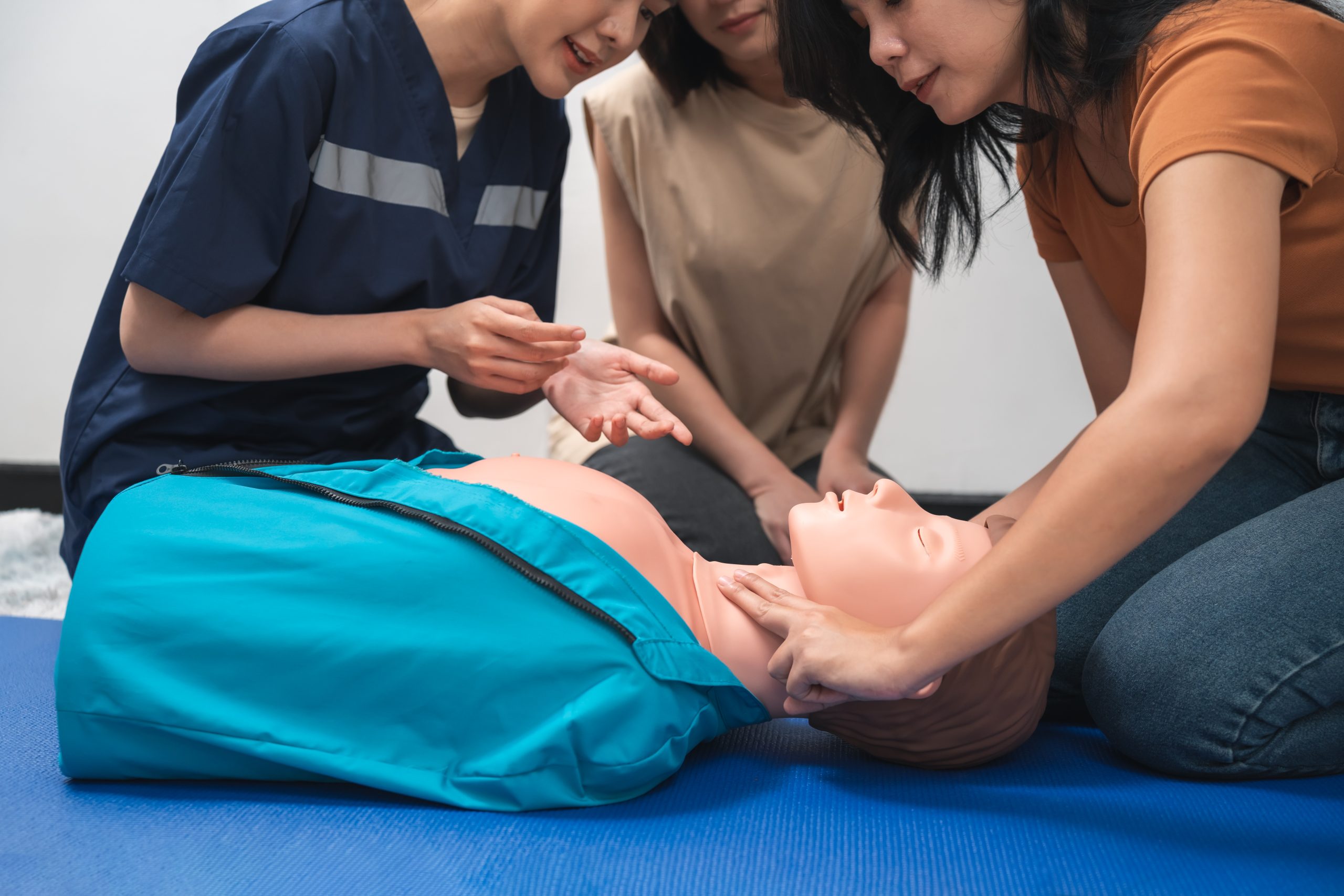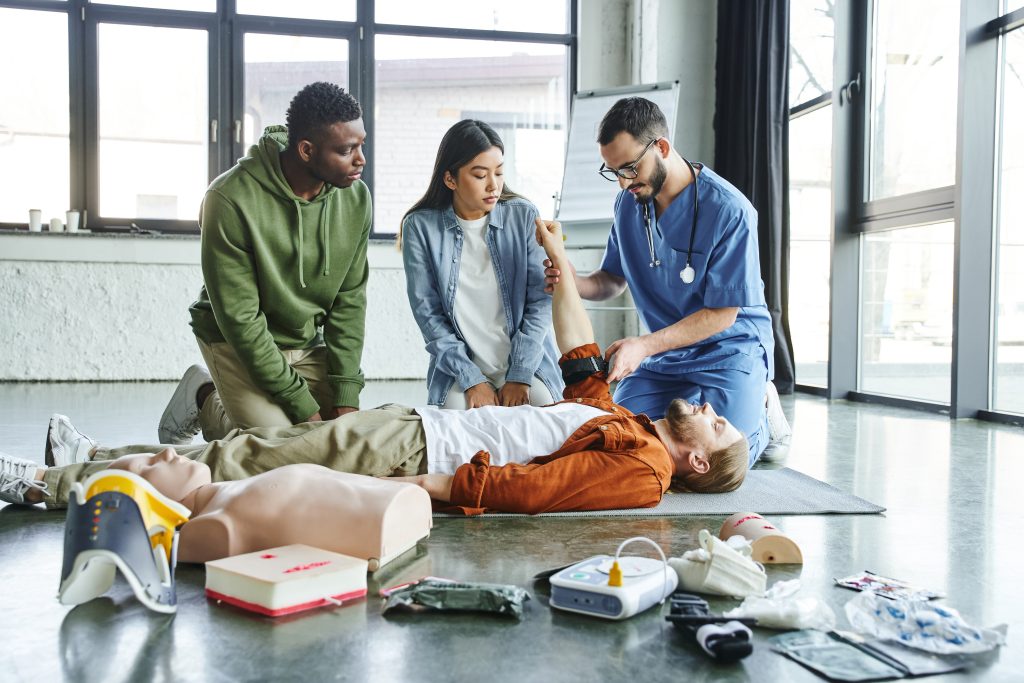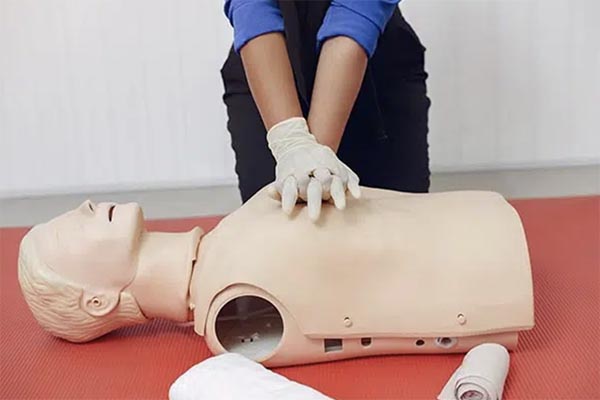
Online courses are convenient, but for a life-saving skill like CPR, convenience isn’t the most important factor. The reality is that learning CPR from a screen lacks the practical experience needed to build confidence and muscle memory. For residents of Washington D.C., choosing in-person training is a much more effective option. The skills you need to save a life must be learned by doing, not just by watching. Here are the top five reasons why in-person CPR training is the essential choice.
Why Is Hands-On Practice Critical for CPR Proficiency?
Learning CPR is like learning to ride a bike, you can’t just watch a video. CPR is a physical skill that requires precise technique. You need to know how much force to use and exactly where to place your hands.
An in-person class gives you the chance to practice on a manikin. You’ll feel the resistance of the chest and ensure your compressions are at the correct depth. This hands-on experience builds the muscle memory you need to react effectively in a real emergency.
Can a Computer Provide Personalized Feedback and Correction?
Online courses can show you what to do, but they can’t tell you if you’re doing it right. Without real-time feedback, you might develop bad habits that could be dangerous in an emergency.
In an in-person class, a certified instructor is there to watch and correct you. They can immediately point out if your hand placement is wrong or if your rhythm is off. This personalized guidance is critical for mastering the proper technique.

What is the Value of a Real-Time Question and Answer Session?
When you’re watching an online video and a question pops into your head, it’s often difficult to get a quick answer. This can leave you with critical gaps in your understanding.
Live, in-person classes allow for direct interaction. You can ask your instructor questions as they come up, getting immediate and detailed answers. This allows you to clarify any doubts about specific techniques or scenarios, ensuring you fully understand every step.
How Does In-Person Training Build Confidence and Reduce Hesitation?
Knowing what to do is different from feeling confident enough to do it. Online courses can teach you the steps, but they don’t prepare you for the pressure of a real-life emergency.
In-person training builds your practical readiness. By repeatedly performing CPR on a manikin, you get comfortable with the physical motions. This practice reduces hesitation and gives you the confidence to act immediately when a life is on the line.
Why is an Official Certification More Credible from a Hands-On Course?
Many employers and organizations require CPR certification. They know that a certificate from a hands-on course is more credible. This is because it confirms that your skills were personally evaluated by a certified instructor.
In Washington D.C., an in-person CPR certification proves you are not just familiar with the concept but are actually capable of performing it correctly. This credibility is a significant advantage professionally and gives you peace of mind personally.

Conclusion
For a skill as critical as CPR, convenience should not be the deciding factor. In-person CPR training provides hands-on practice, expert feedback, and the confidence you need to save a life. While online courses may seem easy, they can’t match the effectiveness of a live class. For anyone in Washington D.C., choosing a local, hands-on course is the best way to ensure you are truly prepared.
Contact CPR Classes Near Me today to schedule your in-person training and gain the skills you need to make a difference.
FAQs about In-Person CPR Training
What is the difference between CPR and AED training?
CPR involves chest compressions and rescue breaths to keep a person alive. An AED is an electronic device that delivers a shock to restart the heart. Most courses teach both together because they are both used in a cardiac emergency.
How long does an in-person CPR class last?
A typical CPR and AED course for adults, children, and infants takes about 3 to 4 hours. Blended courses, which combine online learning with a shorter in-person session, may be a bit shorter.
Is my in-person CPR certification valid everywhere?
Yes, a certification from a reputable, nationally recognized in-person course is widely accepted across the U.S. It is generally considered the most credible form of certification.
How often do I need to renew my certification?
CPR certification typically needs to be renewed every two years. This ensures your skills and knowledge are up to date with the latest guidelines.
Can I take a class without prior medical experience?
Absolutely. In-person CPR classes are designed for everyone, regardless of their medical background. The instructor will guide you through every step of the process.


Leave a Reply